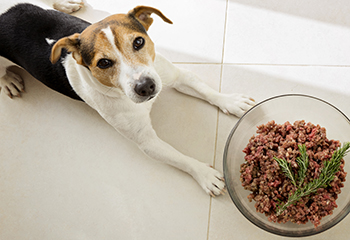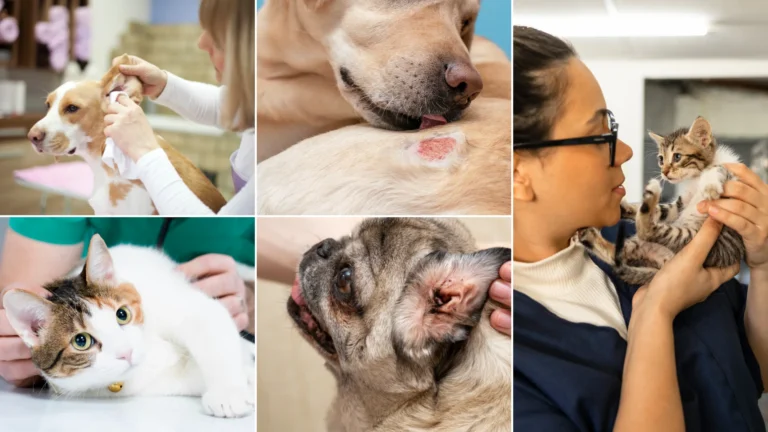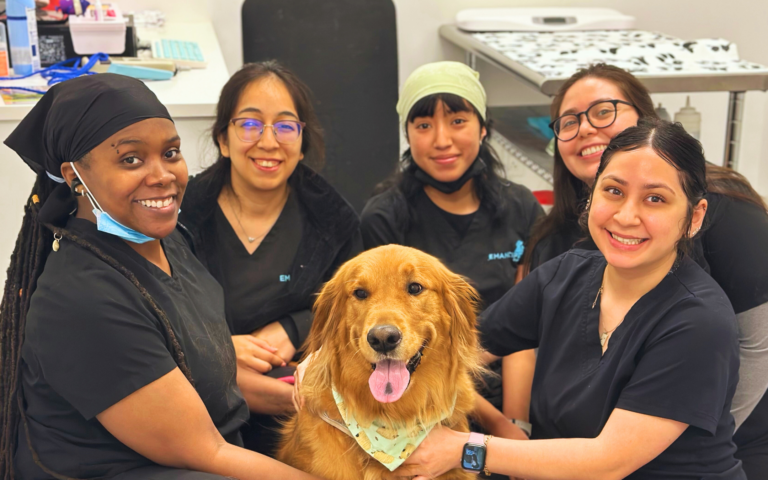Pet food marketing loves buzzwords like “natural,” “whole-prey,” and “raw”—but not all trends are backed by science. In fact, some may put your pet (and your family) at risk. One of the biggest examples is the raw food diet that is often promoted as more “natural”. However, raw food diets are linked to dangerous bacteria, nutritional gaps, and even serious illness. Here’s what you need to know before filling your dog or cat’s bowl.
What is raw food?
Raw food is pet food that is created with a blend of uncooked ingredients to simulate a more “natural” diet. Pet food companies may advertise it as better for your pet, although there are no scientific studies that demonstrate it to be any more nutritious than regular dog or cat food. Raw food may come in frozen, refrigerated, or freeze-dried forms.
Why is raw food dangerous?
Raw food has not been heated to the temperatures recommended by the FDA to remove potentially harmful bacteria and viruses. Raw pet food has been implicated in making both pets and their owners sick!
What kinds of bacteria and viruses are found in raw food?
Many of the bacteria commonly linked with “food poisoning,” such as salmonella, shiga-toxin producing E. coli, and listeria have been isolated from raw pet foods.
And, there have been recent case reports of cats who became sick or even died of bird flu (Avian Influenza) after consuming raw cow’s milk or raw diets containing raw chicken or turkey.
What about wild animals? They don’t cook their food!
This is true, but it is still a risk for those animals. Prey that is eaten directly after it is killed does not have as many opportunities for contamination as food that is made from large batches of meat and other ingredients blended together.
What other issues exist with raw food diets?
Many raw diets are formulated by “boutique” brands that have not always put in the research needed to ensure their diets are nutritionally complete. While they may follow a general recipe that should provide adequate nutrients, without regular testing it is possible that each batch varies in nutritional value and quality.
What about byproducts in commercial diets?
“Byproduct” ingredients have certainly developed a bad reputation, but the truth is when they are used appropriately, these ingredients are often a way of reducing waste in the food industry as well as providing vitamins and nutrients essential to your pet’s health. For example, byproducts may include ground up bones or organ meats, which are not generally eaten by people. These products provide sources of minerals like calcium and several other vitamins that are not present in high levels in conventional “meat.”
So how do I know which food I should feed my pet?
We understand that it can be confusing to pick a pet food. Here are some tips to help make the best choice for your pet.
Watch out for trendy words such as “natural,” “raw,” “whole-prey,” “vegan,” “vegetarian,” etc. These are buzzwords that are used to create the illusion of a healthier food, but aren’t necessarily providing meaningful information about the contents or quality.
Look for larger brands who back their nutrition up with actual research studies, often called “feeding trials.” A feeding trial means that test subjects were given this food as their sole diet for an extended period of time. These pets then had blood tests and other diagnostics performed to ensure they were receiving sufficient nutrients.
Check out https://www.fda.gov/ to look for pet food that has had recalls due to safety concerns, and be cautious with brands who have repeated issues!
Check out our blog about picking the right food for your dog! Read our What’s the Scoop on the Best Dog Food Brands blog here.







